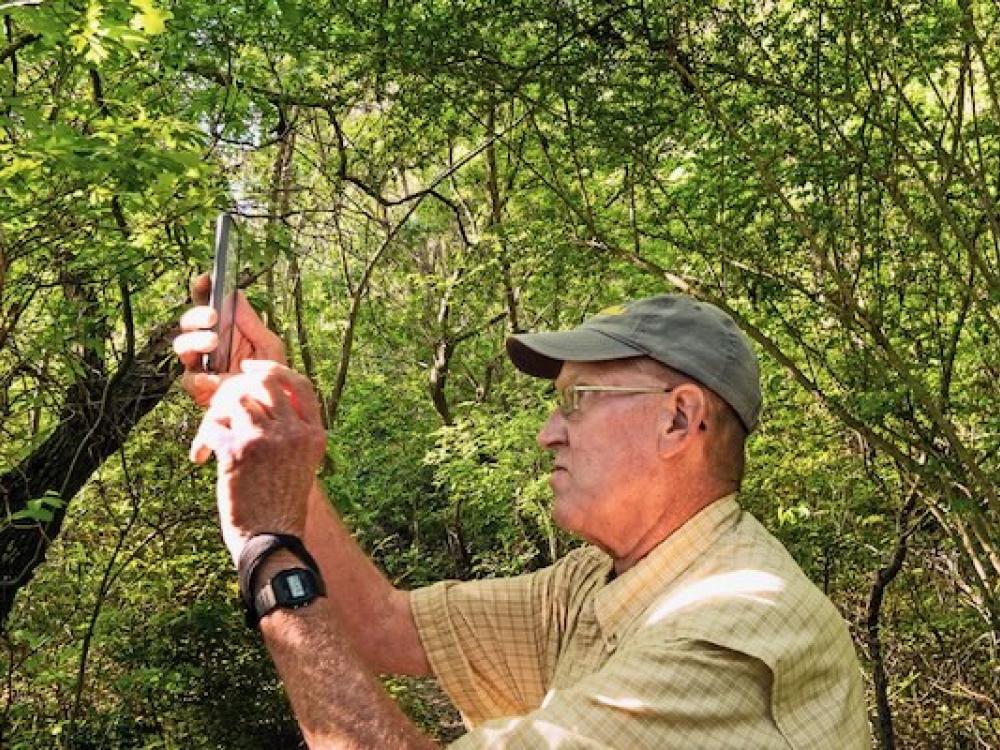
Fort Worth native Jeff Quayle has searched for plants for nearly 40 years and made some unique discoveries. Photo by J.G. Domke.
May 19, 2023
At 6-foot-four-inches tall, Jeff Quayle isn’t reluctant to bend down to peer at a tiny plant.
For the 59-year-old Fort Worth native, botany isn’t just a pastime, it’s a quest.
His lifelong seach to ID all the plants around him led him to document nearly than two thousand specimens for the Botanical Research Institute of Texas and discover a new plant that was subsequently named after him.
“As a botantist, I’m looking for something new, just like a birder who wants to pursue new birds," said Quayle, in his signature matter-of-fact tone.
Some of those who've tagged along with him on his plant surveys say the self-taught citizen scientist is their go-to source for plant ID.
Native Prairie Association member Kelly Walker, who recently joined Quayle to view a farm being restored with native plants, says if you want to know the name of a plant, “Just ask Jeff.”
THE BOTANIST BUG
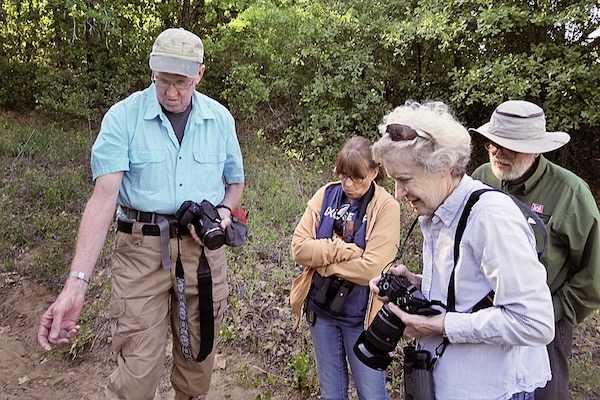 Jeff Quayle answers a question from members of the Friends of Sheri Capehart Nature Preserve in Arlington during a plant walk in April. Photo by J.G. Domke.
Jeff Quayle answers a question from members of the Friends of Sheri Capehart Nature Preserve in Arlington during a plant walk in April. Photo by J.G. Domke.
Quayle’s budding interest in all things flora started in childhood, when he grew roses and vegetables around the family home in River Oaks, near the Naval Air Station.
His passion for plants took root when he could drive out to the Fort Worth Nature Center. In his 20s, he started visiting, not just once a month or once a week, but four or five times every week.
He volunteered to help the park’s former supervisor, Wayne Clark, build trails in the 1980s.
Using Shinners & Mahler’s Illustrated Flora of North Central Texas for reference, he started memorizing the Latin names of plants and learned to recognize the various native grasses, shrubs and trees.
Eager to know more, he traveled to other natural areas. He earned his Texas Master Naturalist certification in 1998. He met with landowners who let him explore their fields to discover which plants were thriving. He always checked to see if there were any rare native plants fighting to survive.
Quayle learned that a lot affects the life of our native plants. They need insects and birds to pollinate them. They like a certain amount of sunlight. Some like full sunlight. But others like for bigger plants to partially shade them, so they grow in gullies under big oak trees.
Soil also determines which plants will thrive. In Texas, especially North Texas, we have a range of topsoils, from sandy to clay. That’s one of the reasons there are thousands of different plants in North Texas — some still to be discovered.
John Snowden, is a colleague, who met Quayle in the 1980s. Snowden focused on native grasses and even had a business for many years landscaping with Texas native grasses.
“We cross pollinate,” he says of Quayle. “Because each of us has knowledge but it is different. What he might lack I can add to and what I might lack he can add on to it.”
DISCOVERIES
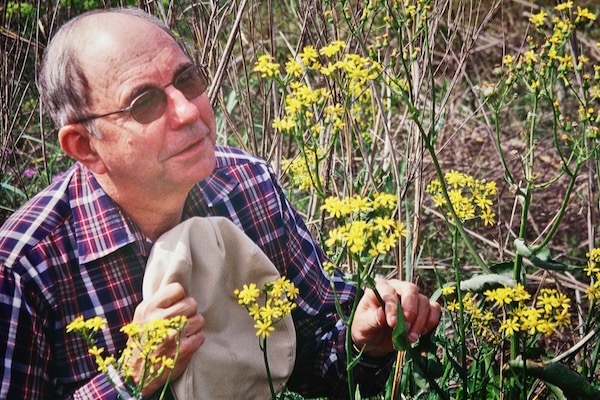 The late BRIT botanist Ted Barkley examines a Quayle's Ragwort (Seneco quayle), named after Jeff Quayle, who discovered it in 2000. Courtesy of Bob O'Kennon.
The late BRIT botanist Ted Barkley examines a Quayle's Ragwort (Seneco quayle), named after Jeff Quayle, who discovered it in 2000. Courtesy of Bob O'Kennon.
Quayle admits IDing plants can be confusing. Plants may look similar but when you notice the tiny details, like the shape of a stem, you can see the distinction. Quayle says he takes photos of plants then checks on the iNaturalist site, a sharing platform for citizen scientists. He may discover that no one has recorded a particular plant growing in that area. So he documents his find and provides a sample to the Botanical Research Institute of Texas in Fort Worth. Quayle said the number of specimens he's submitted to BRIT is now around 1,900.
BRIT’s Philecology Herbarium in the Fort Worth Cultural District is one of the top 10 in the country and houses 1.5 million plant specimens, from common to extinct. The oldest date to 1791 Mexico.
Director of the BRIT herbarium Tiana Franklin Rehman says they have digitized 1,700 of Quayle’s plant specimens and are working on getting more into their online database.
She says they need people like Quayle.
“He is able to pinpoint those particularly interesting natives that aren’t widely known in the area, or are moving into the area. He’s got the radar for that,” she said.
For his citizen science work, the Native Plant Society of Texas gave him the Shirley Lusk Memorial Award in 2020 for collecting and preserving hundreds of Texas native plants for BRIT’s “plant museum.”
“These squished plants become part of our natural heritage history and are invaluable resource material for future budding neophytes as well as seasoned botanist alike,” said Michael Eason, of the Native Plant Society of Texas.
In 2000, Quayle was wandering in Lake Mineral Wells State Park when he found something new that didn’t match anything else he had ever seen. BRIT and other botanists in universities and organizations all agreed: the plant had never been documented. They named it the Senecio quaylei, or Quayle’s Ragwort.
HOT PURSUIT
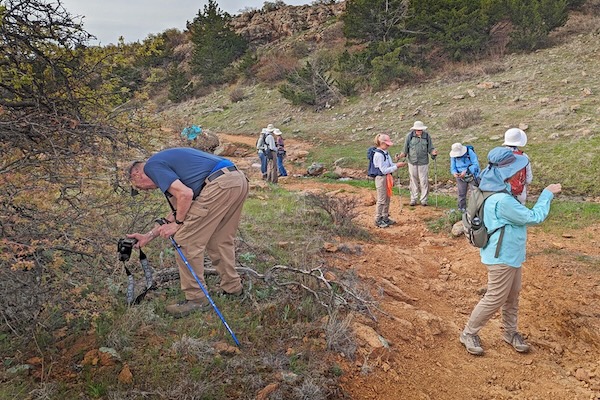 Jeff Quayle, left, finds something interesting while leading a plant walk in Wichita Mountains Wildlife Refuge in Oklahoma this spring. Photo by J.G. Domke.
Jeff Quayle, left, finds something interesting while leading a plant walk in Wichita Mountains Wildlife Refuge in Oklahoma this spring. Photo by J.G. Domke.
Quayle continues to dedicate many hours pursuing plants during his off hours from his longtime occupation as a pizza delivery driver. After nearly 40 years honing his botony chops, he still spends three or four times a week searching for and recording native plants he sees in parks, or along the side of the road and the remaining Texas prairies.
Quayle posts regularly on iNaturalist, the app created by University of California in Berkley students in 2008.
Since joining the platform in 2015, he has posted more than 8,500 native plants to date.
He's earned the respect of the all-time iNat champ in North Texas, Sam Kieschnick, a Fort Worth-based urban wildlife biologist for Texas Parks and Wildlife Department.
Over the last decade, Kieschnick has posted more than 100,000 observations on iNaturalist and IDed more than 600,000 postings by other iNat users. He said he's known Quayle since Kieschnick worked at BRIT, a decade ago.
"Jeff has a unique eye for the uncommon plants, and he's quite adept at pinpointing these rarities for others," said Kieschnick. "I think that's what I appreciate the most about Jeff — he shares his findings with the naturalist community so that all can engage in these discoveries."
WALKING THE TALK
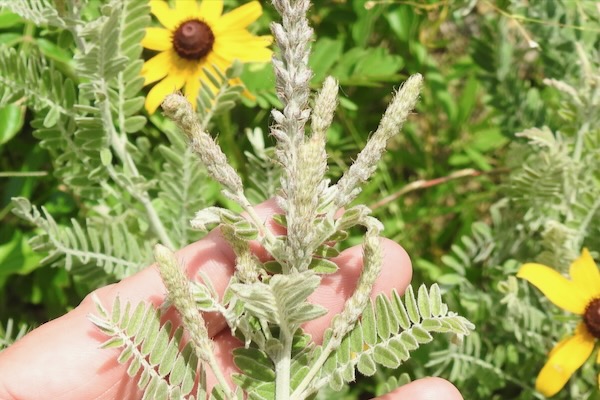 One of the plants on Jeff Quayle's bucket list is the leadplant, aka downy indigo bush, prairie shoestring or buffalo bellows, a small, perennial semi-shrub native to North America with small purple flowers. Photo by Sam Kieschnick.
One of the plants on Jeff Quayle's bucket list is the leadplant, aka downy indigo bush, prairie shoestring or buffalo bellows, a small, perennial semi-shrub native to North America with small purple flowers. Photo by Sam Kieschnick.
If you want to go on a plant walk with Quayle, he invites anyone interested to come look at native plants with him.
In the spring and fall, he leads walks and plant surveys at natural areas and state parks for local environmental groups, such as the Fort Worth Chapter of the Native Prairie Association of Texas, a statewide nonprofit formed in 1986 that is focused on preserving and restoring native prairies in Texas. Sometimes, he arranges day trips on the fly.
So far this spring, he’s led more than 20 outings at various locations. He's leading a bio blitz on May 27, 9 a.m. to 1 p.m. at Camp Leroy Shuman, a 60-acre site, owned by the city of Fort Worth. (If you want to attend, you can register here.)
He advertises his outings via an email blast, which he sends to about 100 followers. (If you want to sign up, email squaylei2000@gmail.com.)
“It’s about education and people learning about different plants," says Quayle in his no-nonsense style. "We always look at other stuff too. Some people like to bird. We look at butterflies and caterpillars and other stuff."
Fellow plant sleuth Suzanne Tuttle, a retired Fort Worth-based botanist, former manager of the Fort Worth Nature Center and Refuge and winner of the 2022 Green Source DFW Educator of the Year Award, is also known for her local guided hikes.
Tuttle recommends tagging along with Quayle sometime.
“Going out with Jeff and other amateur botanists and hearing others' collective knowledge is just so interesting,” says Tuttle. “You hear stories that you don’t get from iNaturalist.”
RELATED ARTICLES
North Texan makes top 10 list on popular naturalist app
State prairie conservation group to launch chapters in Dallas and Fort Worth
Plant 'museum' thriving in Fort Worth Cultural District
Stay up to date on everything green in North Texas, including the latest news and events! Sign up for the weekly Green Source DFW Newsletter! Follow us on Facebook and Twitter. Also check out our new podcast The Texas Green Report, available on your favorite podcast app.









